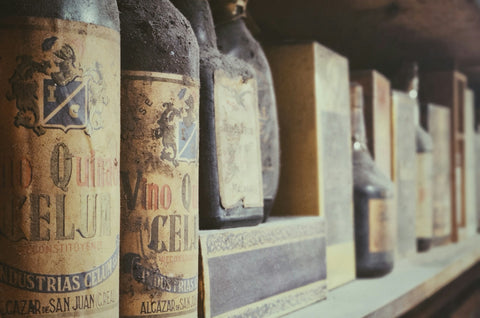When it comes to savoring a glass of wine, the phrase "Old World wines" often conjures images of historic vineyards, traditional winemaking techniques, and a deep connection to terroir. Old World wines, originating from Europe and the Middle East, offer distinct and complex flavor profiles that reflect centuries of winemaking heritage. In this blog post, we’ll delve into the unique characteristics of Old World wines, focusing on their flavor profiles and the regions that produce these timeless classics.
What Defines Old World Wines?
Old World wines are produced in countries with long-established wine traditions, primarily in Europe. These wines are often distinguished by their adherence to regional winemaking regulations, which dictate everything from grape varieties to vineyard practices and production methods. This commitment to tradition and terroir results in wines with unique, place-specific characteristics.
Key Characteristics of Old World Wines:
- Terroir-Driven: Old World wines emphasize the expression of terroir, the unique combination of soil, climate, and topography that defines each vineyard.
- Subtle Complexity: The flavor profiles are typically more subtle and complex, with an emphasis on balance, acidity, and minerality.
- Aging Potential: Many Old World wines are crafted to age gracefully, developing deeper and more intricate flavors over time.

Flavor Profiles by Region
France:
- Bordeaux: Known for its red blends of Cabernet Sauvignon, Merlot, and other varietals, Bordeaux wines often exhibit flavors of blackcurrant, plum, tobacco, and cedar. The tannins are firm, providing excellent aging potential.
- Burgundy: Renowned for Pinot Noir and Chardonnay, Burgundy wines showcase flavors of red berries, earth, and spice for reds, and citrus, apple, and minerality for whites.
- Champagne: Sparkling wines from Champagne are characterized by notes of green apple, pear, brioche, and almond, with fine bubbles and high acidity.
Italy:
- Tuscany: Home to Chianti and Brunello di Montalcino, Tuscan wines feature flavors of cherry, leather, herbs, and an underlying earthiness. Sangiovese is the dominant grape, offering high acidity and firm tannins.
- Piedmont: Nebbiolo-based wines like Barolo and Barbaresco are known for their complex aromas of rose, tar, and red fruit, with robust tannins and significant aging potential.
- Veneto: Famous for Amarone and Prosecco, Veneto wines range from rich, dried fruit and chocolate notes in Amarone to the crisp, floral, and fruity characteristics of Prosecco.
Spain:
- Rioja: Rioja wines, primarily made from Tempranillo, exhibit flavors of red fruit, vanilla, and clove, with a smooth, velvety texture and well-integrated oak.
- Ribera del Duero: Similar to Rioja but often more full-bodied, these wines feature dark fruit, spice, and earthy notes, with firm tannins and excellent structure.
- Priorat: Known for its powerful red wines, Priorat offers intense flavors of blackberry, licorice, and mineral, with a bold, tannic profile.
Germany:
- Riesling: German Rieslings are celebrated for their high acidity and balance between sweetness and tartness, offering flavors of green apple, lime, peach, and slate. These wines can range from bone-dry to lusciously sweet.
The Influence of Terroir
One of the defining features of Old World wines is their profound connection to terroir. The concept of terroir encompasses the environmental factors that affect the vine, including soil composition, climate, altitude, and even the microflora present in the vineyard. This connection to place imparts unique flavors and aromas that are distinctive to each region.
For example:
- Bordeaux’s Gravelly Soils: The gravel soils of Bordeaux contribute to the structured tannins and mineral notes in its wines.
- Burgundy’s Limestone: The limestone-rich soils in Burgundy enhance the minerality and elegance of its wines.
- Tuscany’s Warm Climate: Tuscany’s warm climate and varied soils produce wines with ripe fruit flavors balanced by bright acidity.
Why Choose Old World Wines?
Old World wines offer a sophisticated drinking experience rooted in tradition and a deep sense of place. Their complex flavor profiles and aging potential make them a favorite among wine enthusiasts looking for elegance and nuance in their glass. Whether you’re a seasoned aficionado or a curious beginner, exploring the world of Old World wines can open up a rich tapestry of flavors and stories.
Visit Five Towns Wines & Liquors in New York to discover an extensive selection of Old World wines. Our knowledgeable staff can guide you to the perfect bottle that captures the essence of these storied regions.


